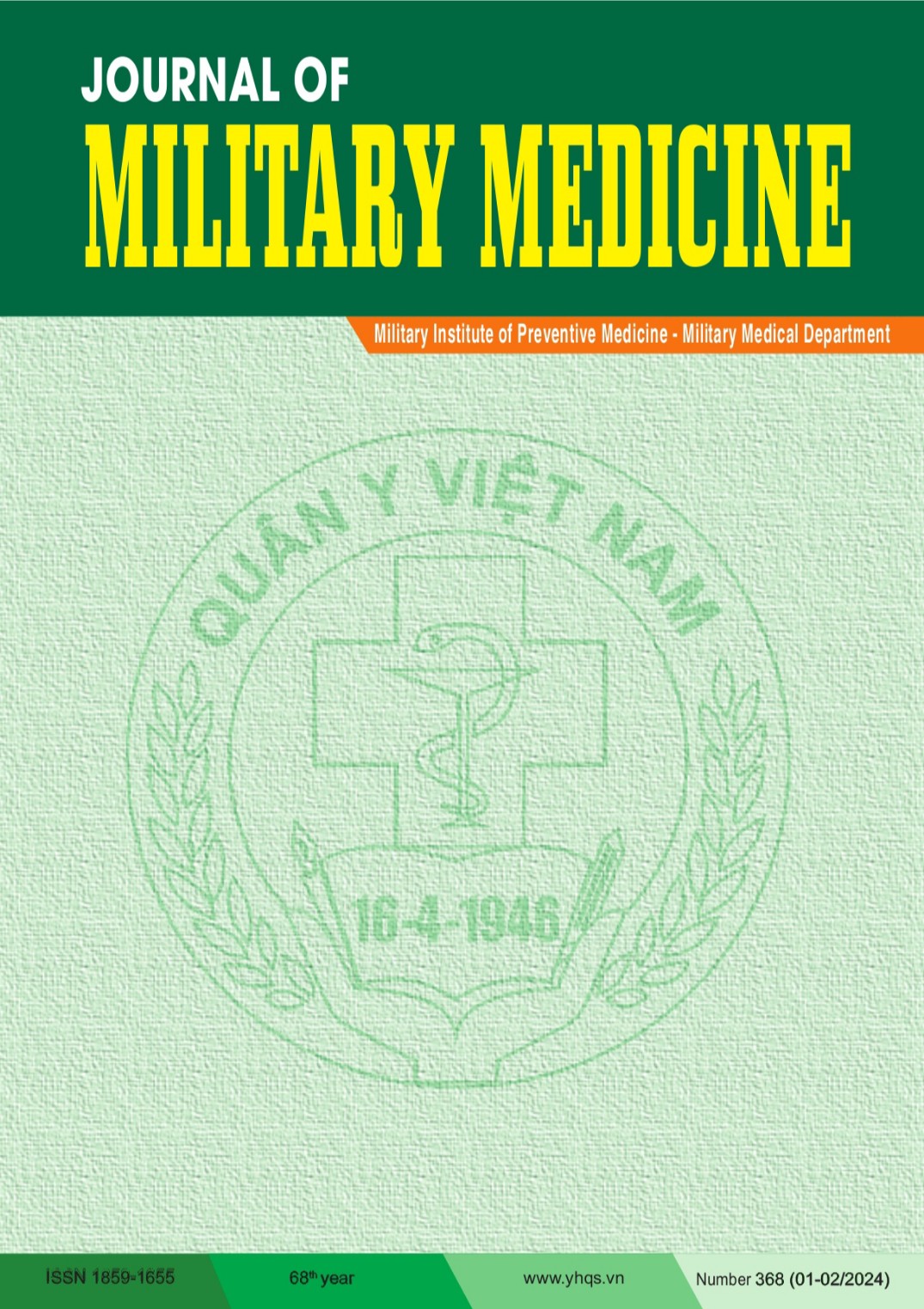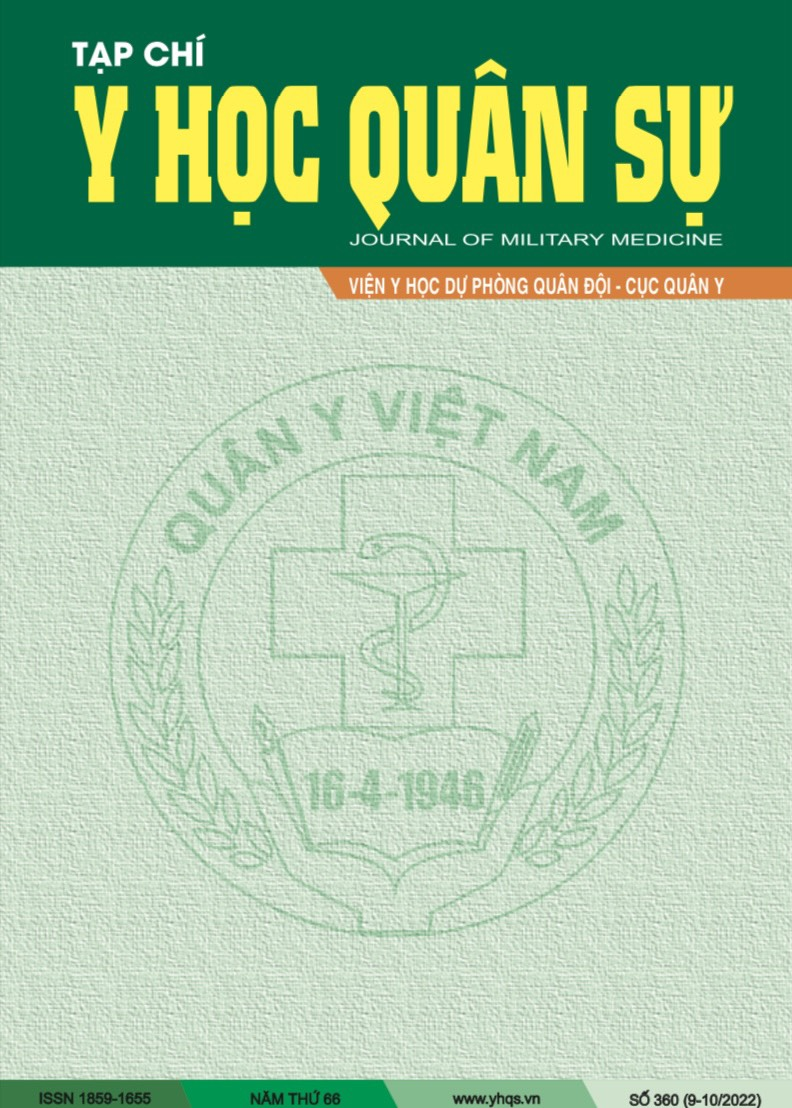EVALUATION OF THE THERAPEUTIC SUPPORT EFFECTS OF LIGHT THERAPY FOR PATIENTS WITH SEVERE ACNE VULGARIS
DOI:
https://doi.org/10.59459/1859-1655/JMM.329Từ khóa:
Red light, blue light, acne vulgarisTóm tắt
Objective: To evaluate the treatment results of combined blue light (415 nm wavelength) and red light (633 nm wavelength) therapy for patients with severe acne vulgaris.
Subjects and methods: A pre-post comparative interventional study on 30 patients with severe acne vulgaris, examined and treated at the Central Dermatology Hospital from July 2022 to June, 2023.
Results: The female-to-male patient ratio was approximately 2.3/1. Patients aged 16-25 accounted for 70.8%, and 46.7% had family members with acne. Clinically, 100% of patients had facial lesions (with 97.8% of lesions in the cheek area). The number of inflammatory and non-inflammatory lesions gradually decreased from week four to week 12 of treatment. The differences between treatment weeks and pre-treatment were statistically significant, with p < 0.05. Good and very good treatment results increased for both genders after four, eight, and 12 weeks of the treatment, with statistically significant changes (p1-2 < 0.05 and p3-1 < 0.05). Dry lips remained a common unwanted effect at the end of treatment (60.0%).
Conclusions: Treatment of severe acne vulgaris with isotretinoin combined with blue light and red light had a good treatment effect after 12 weeks of treatment.
Tài liệu tham khảo
Tran Van Thao (2014), “The supportive treatment effectiveness of Papulex in ordinary acne at the Central Dermatology Hospital,” Master's Thesis, Hanoi Medical University.
Duong Thi Lan (2009), “A study on the impact of common acne on the quality of life of patients,” Master's Thesis, Military Medical Academy.
Nguyen Van Thuong (2017), “Dermatology: Acne”, Medical Publishing House, Volume 3, p. 24.
Nguyen Thi Ngoc (2013), “Effectiveness of Klenzit-C cream in the treatment of common acne”, Medical Master's Thesis, Hanoi Medical University.
Tran Van Thao (2014), “The supportive treatment effectiveness of Papulex in ordinary acne at the Central Dermatology Hospital, Medical Master's Thesis, Hanoi Medical University.
Bhate K. & Williams H.C (2013), “Epidemiology of acne vulgaris”, Br. J. Dermatol, 168, 474-485.
Zeichner J.A et al (2017), “Emerging Issues in Adult Female Acne”, J. Clin. Aesthetic Dermatol, 10, 37-46.
Goldberg D.J. & Russell B.A (2006), “Combination blue (415 nm) and red (633 nm) LED phototherapy in the treatment of mild to severe acne vulgaris”, J. Cosmet. Laser Ther, Off. Publ. Eur. Soc. Laser Dermatol, 8, 71-75.
Na J.I. & Suh D.H (2007), “Red light phototherapy alone is effective for acne vulgaris: randomized, single-blinded clinical trial”, Dermatol. Surg. Off. Publ. Am. Soc. Dermatol. Surg. Al 33, 1228-1233; discussion 1233.
Leheta T.M (2009), “Role of the 585 nm pulsed dye laser in the treatment of acne in comparison with other topical therapeutic modalities”, J. Cosmet, Laser Ther. Off. Publ. Eur. Soc. Laser Dermatol. 11, 118-124.
Seaton E.D et al (2003). “Pulsed-dye laser treatment for inflammatory acne vulgaris: randomised controlled trial”, The Lancet, 362, 1347-1352.
Harto A., García-Morales I., Belmar P. & Jaén, P. (2007), “Pulsed dye laser treatment of acne. Study of clinical efficacy and mechanism of action”, Actas Dermosifiliogr. 98, 415-419.
Choi Y.S et al (2010), “Intense pulsed light vs. pulsed-dye laser in the treatment of facial acne: a randomized split-face trial”, J. Eur. Acad. Dermatol. Venereol. JEADV, 24, 773-780.
Tải xuống
Đã Xuất bản
Cách trích dẫn
Số
Chuyên mục
Chấp nhận đăng 13-12-2023
Ngày xuất bản 28-02-2024



